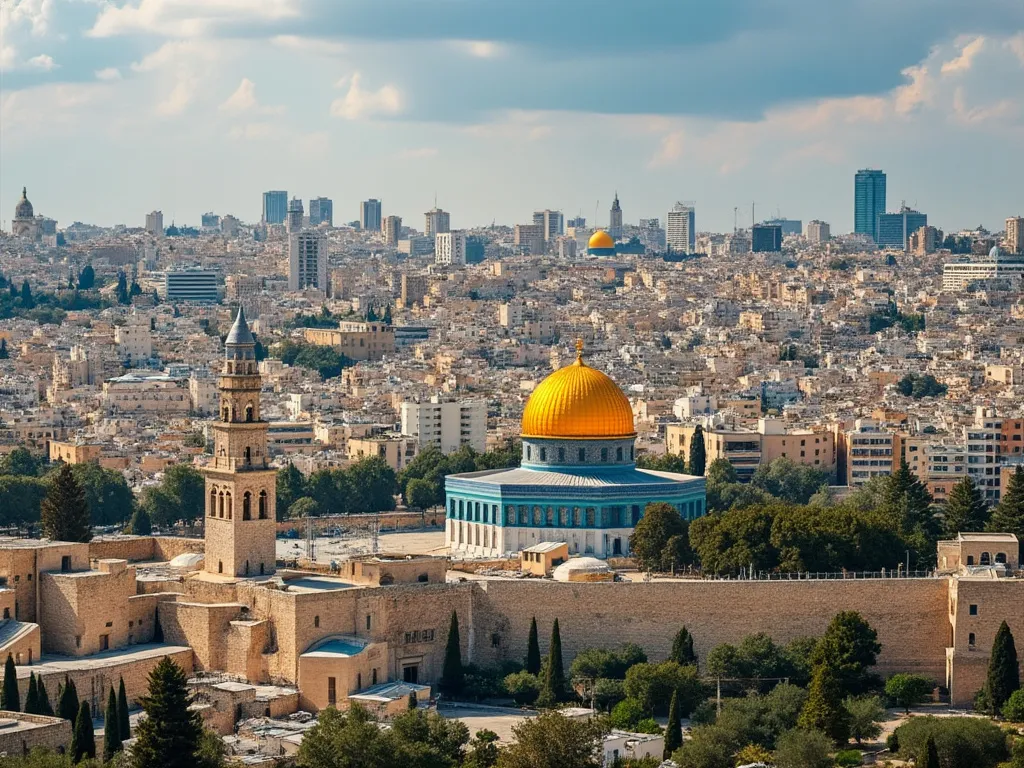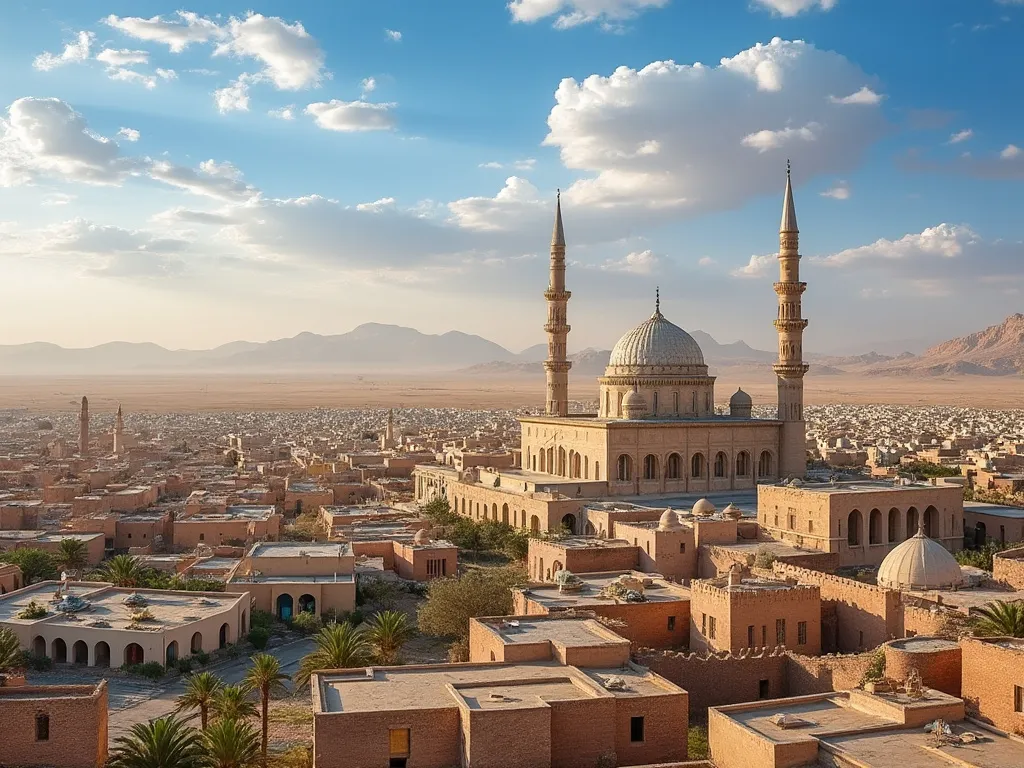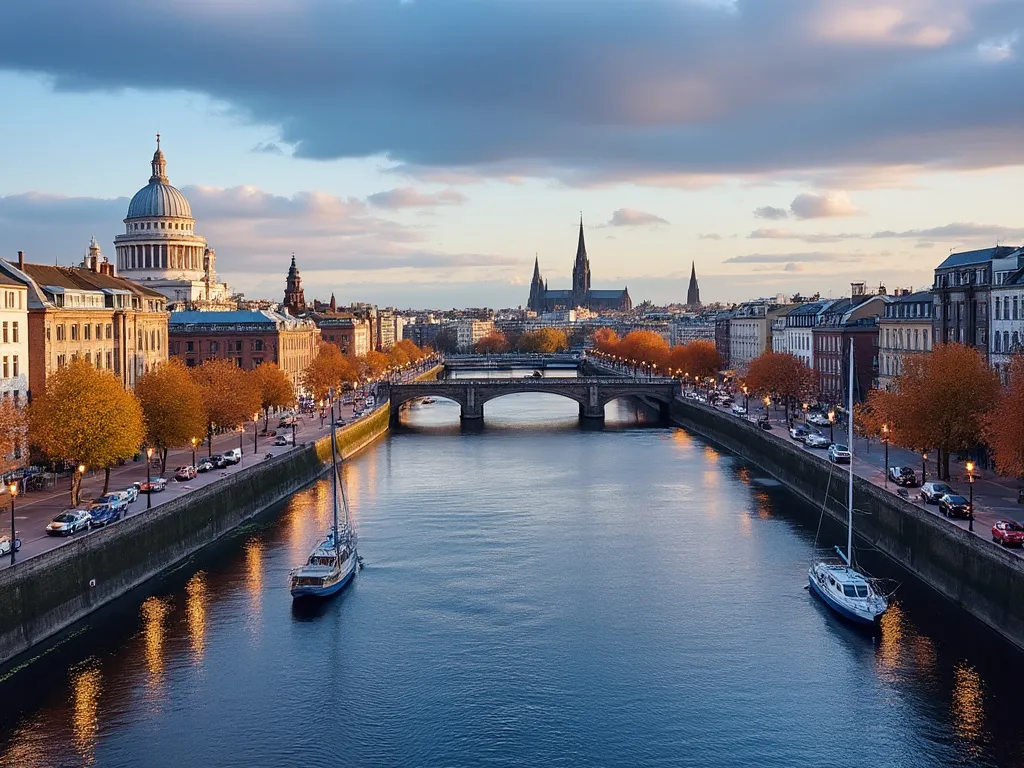
East Jerusalem is a disputed territory that has been a major point of contention between Israel and the Palestinians. It has been a major urban center for thousands of years and has played a significant role in the history of the region. East Jerusalem has a rich cultural and historical heritage, and it continues to be a significant city in the Middle East.
East Jerusalem Information
| Country | 🇵🇸 Palestine |
| Population | 301,782 (2019 est.) |
| Coordinates | 31.7833° N, 35.2167° E |
| Area | 308 km² (119 sq mi) |
| Climate | Semi-arid |
| Language | Arabic, Hebrew, English |
| Currency | Israeli shekel (ILS), Jordanian dinar (JOD) |
| Time zone | UTC+2 (IST), UTC+3 (IDT) |
| Proximity to other major cities | Jerusalem is situated 62 km (39 mi) east of Tel Aviv, 71 km (44 mi) west of Amman, Jordan |
Historical Background of East Jerusalem
East Jerusalem has a long and complex history, with many different empires and dynasties having ruled over the city at one time or another. The city was an important center of trade and commerce during the Ottoman Empire and later became a British colony during World War I. In 1948, East Jerusalem was occupied by Jordan and in 1967 it was occupied by Israel during the Six-Day War. Since then, East Jerusalem has been the subject of intense controversy, with many Palestinians claiming it as the capital of their future state.
Modern-day Situation
In 2000, the Second Intifada began, leading to widespread violence and tensions in East Jerusalem. The Israeli government responded by constructing the Israeli West Bank barrier, which cut off East Jerusalem from the West Bank and caused economic hardship for many Palestinian residents. In recent years, East Jerusalem has been the site of ongoing protests and tensions, with many Palestinians feeling increasingly isolated and disconnected from their fellow Arabs.
Geographical Location of East Jerusalem
East Jerusalem is situated in the south-central part of the West Bank, in the Judean Mountains. It is strategically located near the ancient Mount of Olives and the Kidron Valley. The city's geography is characterized by rolling hills, valleys, and terraced agricultural lands.
Cultural Significance of East Jerusalem
East Jerusalem has great cultural and historical significance, both to Jews and Palestinians. It is the location of the Al-Aqsa Mosque and the Dome of the Rock, which are considered the third holiest site in Islam after Mecca and Medina. It is also the location of the Temple Mount, the Western Wall, and other Jewish and Christian sites. East Jerusalem is a microcosm of the Middle East's complexities, representing multiple ethnic and religious identities.
The Israeli Settlements in East Jerusalem
The city's most contested neighborhood, East Jerusalem is now an open urban warfare where homes have become symbolic obstacles and contested heritage claims: modern townlets arise all at once facing decaying adjacent existing real habitats giving glimpses over massive landscape layers encompass this sensitive old complex mosaic set
Economic Importance of East Jerusalem
East Jerusalem holds significant economic value for both Israelis and Palestinians, though the political status of the area complicates economic development. Historically, East Jerusalem served as a major hub of Palestinian commerce and trade, featuring bustling markets, small businesses, and key institutions.
After the 1967 Six-Day War, Israel captured East Jerusalem and subsequently annexed it, a move not recognized internationally. This complex political situation has had profound effects on the economic conditions in the area, affecting investment, infrastructure development, and employment opportunities.
Despite these challenges, East Jerusalem remains an important center for tourism due to its rich historical and religious heritage. The Old City, a UNESCO World Heritage Site, is home to several religious landmarks, including the Al-Aqsa Mosque, the Western Wall, and the Church of the Holy Sepulchre, which attract millions of visitors annually.
The tourism industry is a vital component of East Jerusalem's economy, supporting numerous hotels, restaurants, and tour services. Additionally, small businesses, artisans, and markets contribute to the local economy by providing goods and services to residents and tourists alike.
However, the economic disparity between East Jerusalem and the rest of the city is notable. East Jerusalem faces infrastructure challenges, higher poverty rates, and limited access to essential services, which impact its economic development. Addressing these issues and improving the economic conditions in East Jerusalem is crucial for fostering stability and prosperity in the region.
Interesting Facts About East Jerusalem
- The Old City: The Old City of Jerusalem, located in East Jerusalem, is a UNESCO World Heritage Site. It is divided into four quarters: the Jewish Quarter, the Christian Quarter, the Muslim Quarter, and the Armenian Quarter, each with its own unique character and history.
- Al-Aqsa Mosque and Dome of the Rock: The Haram al-Sharif (Noble Sanctuary) in East Jerusalem houses the Al-Aqsa Mosque and the Dome of the Rock. The Dome of the Rock, with its iconic golden dome, is one of the oldest surviving Islamic structures in the world, completed in 691-692 CE.
- Western Wall: The Western Wall, also known as the Wailing Wall, is the last remaining wall of the Second Jewish Temple, destroyed by the Romans in 70 CE. It is the holiest site where Jews are permitted to pray.
- Cultural and Religious Diversity: East Jerusalem is a melting pot of cultures and religions, home to some of the most significant religious sites in the world. It is sacred to Jews, Christians, and Muslims, each having historical and spiritual ties to the city.
- Mount of Olives: The Mount of Olives, located to the east of the Old City, is an important site in Jewish and Christian traditions. It has been used as a Jewish cemetery for over 3,000 years and is mentioned in the New Testament as the place where Jesus ascended to heaven.
- Ancient History: Archaeological findings in East Jerusalem date back to the Canaanite period, making it one of the oldest continuously inhabited cities in the world. The City of David, located just south of the Old City, is considered the original settlement area of ancient Jerusalem.
- Political Significance: East Jerusalem is at the heart of the Israeli-Palestinian conflict. Both Israelis and Palestinians claim it as their capital, making its status one of the most contentious issues in the peace process.
- Vibrant Markets: The markets of East Jerusalem, such as the famous Arab souk in the Old City, offer a vibrant mix of sights, sounds, and aromas. Visitors can find everything from spices and textiles to jewelry and religious items.
- Diverse Cuisine: East Jerusalem’s cuisine reflects its multicultural heritage. Traditional Palestinian dishes such as falafel, hummus, and maqluba can be found alongside foods influenced by various cultures that have passed through the city over the centuries.
- Educational Institutions: East Jerusalem is home to several prominent educational institutions, including the Al-Quds University and the Al-Quds Open University, which play a vital role in higher education and research in the Palestinian territories.
Tourist Attractions in East Jerusalem
- Al-Aqsa Mosque: One of the holiest sites in Islam, the Al-Aqsa Mosque is located on the Temple Mount in East Jerusalem. It is the third holiest site in Islam and is a place of pilgrimage for Muslims worldwide.
- Dome of the Rock: The Dome of the Rock is an iconic Islamic shrine located on the Temple Mount in East Jerusalem. It is known for its golden dome and intricate mosaics, and it is considered one of the most beautiful buildings in the world.
- Western Wall: The Western Wall, also known as the Wailing Wall, is a remnant of the Second Jewish Temple and is the holiest site in Judaism. It is a place of prayer and pilgrimage Church of the Holy Sepulchre: The Church of the Holy Sepulchre is a Christian church located in the Christian Quarter of the Old City of Jerusalem. It is believed to be the site of Jesus' crucifixion, burial, and resurrection.
- Mahane Yehuda Market: Mahane Yehuda Market, also known as "The Shuk," is a bustling market in West Jerusalem that offers a wide variety of fresh produce, spices, baked goods, and more. It is a popular destination for locals and tourists alike.
Conclusion on East Jerusalem
East Jerusalem is a city of immense historical, cultural, and religious significance. It is a place where the past and present intersect, where ancient traditions and modern conflicts coexist. The city's diverse population, rich heritage, and political complexities make it a unique and compelling destination for visitors from around the world.
 Laayoune
Laayoune
 Fakaofo
Fakaofo
 Dublin
Dublin
 Dushanbe
Dushanbe